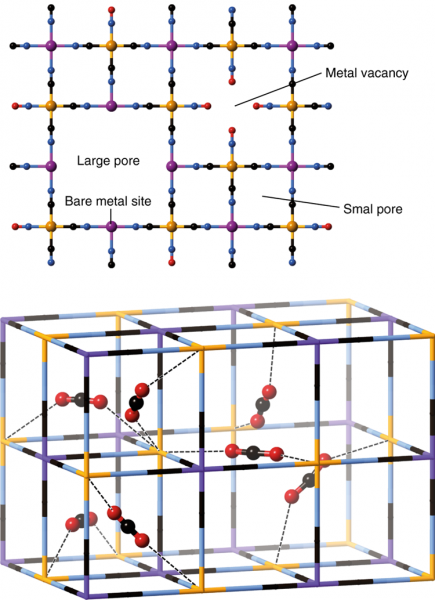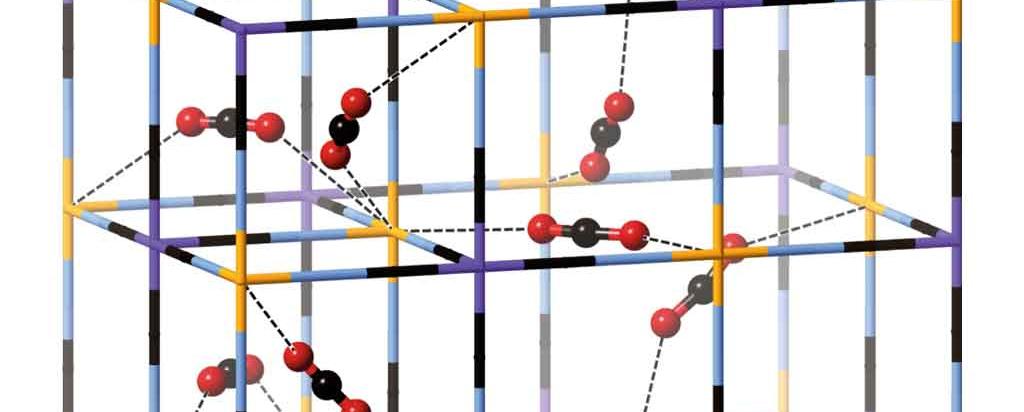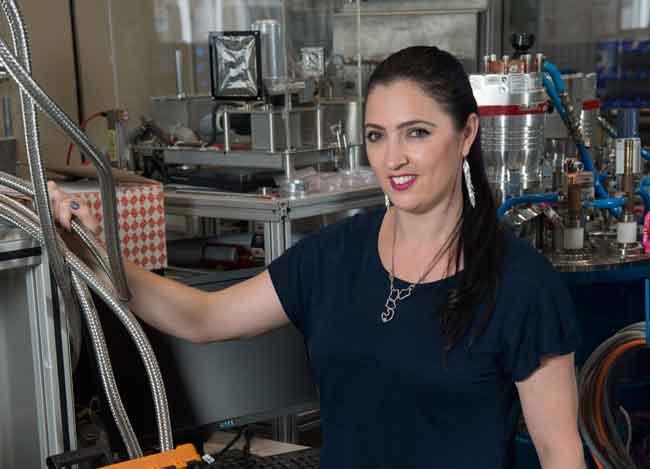

Published on the 17th December 2018 by ANSTO Staff
Data from the Wombat high intensity neutron powder diffractometer was used to show that the way a material’s volume responds to temperature (the coefficient of thermal expansion) can be continuously tuned using a dynamic stimulus.
The article was recently published as an Editor’s Highlight in Nature Communications.
“Many coordination frameworks have porosity, which combined with structural flexibility can lead to remarkable thermomechanical properties,” said Prof. Vanessa Peterson (pictured below), who leads ANSTO’s Functional Materials for Energy Systems and Devices research project.
Negative thermal expansion refers to the counterintuitive property of shrinking upon heating. A zero thermal expansion material remains unchanged with temperature and is usually associated with thermomechanical stability, an important property for applications such as precision instrumentation. Consequently, there is great interest and much research in finding ways to control the way materials respond to temperature.
A group of researchers from ANSTO and The University of Sydney revealed the details of how the thermal expansion of two framework materials with vacant pores could be accurately controlled by the adsorption of carbon dioxide. They proposed models to explain the behaviour which account for the thermal evolution of the material volume through competing contributions from thermal and CO2 interaction effects.
The linear relationship between the coefficient of thermal expansion and the concentration of CO2 was first shown for a Prussian blue analogue material by Stephen Ogilvie, a graduate researcher at the time within Prof. Cameron Kepert’s group at The University of Sydney and co-supervised by Peterson.
Peterson suggested that the linear relation might be quantitatively described by temperature effects that are offset by effects from the interaction of the CO2 with the material. Peterson and her postdoctoral researchers Josie Auckett (now at Durham University) and Samuel Duyker (now at University of Sydney) went to Kepert with the idea.

“We wanted to show that the concept held more generally, and were seeking other materials with which to test the theoretical model,” Peterson remembers. Samuel Duyker pointed to work by another of Kepert’s graduate researchers, Arnold Barkhordarian, who was studying the interaction of CO2 with another porous framework material – a transition metal nitroprusside, in collaboration with Peterson.
The team again saw that the coefficient of thermal expansion of the material could be varied linearly according to the amount of adsorbed CO2.
Kepert conceived a model to describe the volume of the transition metal nitroprusside material as a function of CO2 loading and temperature.
The volume of the material was well described by this model, which accounted for the competing effects of temperature and framework interactions with the CO2.
Although Kepert’s first model described the volume evolution of the transition metal nitroprusside material, the Prussian blue analogue required the development of a more complicated variation of the model to account for separate contributions from the two different types of crystallographic CO2 sites interacting with the host framework.

“Josie developed the multi-site expansivity model, which has excellent agreement with our experimental data, and accounts for CO2 at both large and small pore sites within the Prussian-blue analogue material,” said Peterson.
“Guest molecules at these two sites have different but quantifiable contributions to the material expansivity.”
Each model described the data for each material and enabled the accurate prediction of the materials volume response to temperature for a given CO2 concentration.
The investigators pointed out that the approach to use an external stimulus, such as an absorbed species, is easier than making compositional changes to the framework.
The powder diffraction experiments that determined both the material expansivity and the interaction of CO2 guests within the materials were performed by Peterson and her postdoctoral researchers Sam Duyker and Hubert Chevreau, alongside the graduate researchers who synthesized the materials, Stephen Ogilvie and Arnold Barkhordarian.
Wombat is one of the fastest neutron powder instruments in the world, and Peterson and her postdoctoral researchers, alongside the sample environment team at the Australian Centre for Neutron Scattering, have developed specialist equipment to study porous materials as a function of both adsorbed guest species and temperature, enabling the research to be done.
The findings open new opportunities to tailor thermal expansion properties.
https://www.nature.com/articles/s41467-018-06850-6